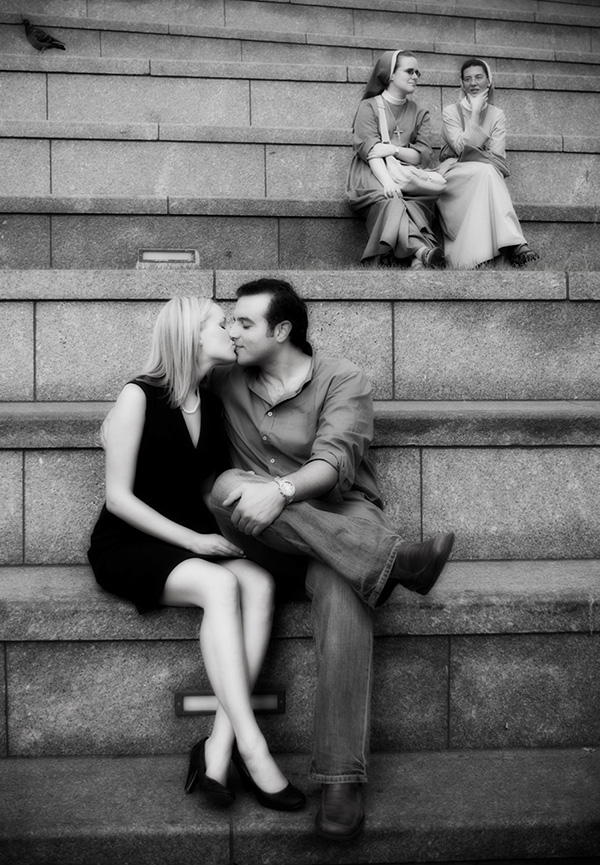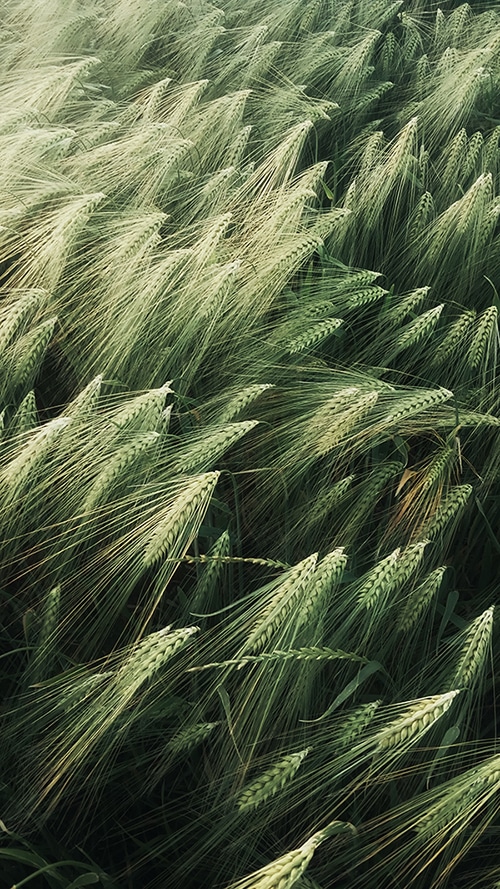How To Use Patterns & Repetition For Spectacular Photography Compositions

“Exceptional photos are created not taken.”
As a young child, my dad took me to his place of work one day. I was amazed by all the machinery.
Later in life, I realized how repetitive his job at GM was. I asked him how he managed to do the same thing repeatedly (for 30 years) without going crazy. “It’s easy,” he said once you get in a rhythm.
I’m not sure I’d agree. Thankfully, repetition in photography doesn’t have the same meaning. It’s more creative. Which I prefer.
Have you ever noticed our world is filled with patterns and repetition? They make for an excellent piece of your composition. By themselves, they take on a life of their own.
You’re about to discover a whole new world of creative opportunities. Once you’re done with this article, you’ll begin to see patterns all around you and may even wonder why you didn’t include them in your photos before.
You’ll also discover two main techniques for capturing patterns and repetitive elements for your composition. This includes either emphasizing the pattern or breaking it.
What do I mean by that? Well, you’ll find out below and much more.
If you’re ready… let’s do it!
Table of Contents
What Is Pattern and Repetition In Photography?
Repetition of an element creates a pattern. This pattern grabs our viewer’s attention…
The placement of particular objects can also help direct a viewer to specific points in the image. Think of this as another form of storytelling.
Not everything is a pattern since you need a certain number of elements to qualify as a pattern… more on that in a moment.
Patterns Are the Heartbeat Of Your Composition
My dad’s work life was repetitive and could be downright boring.
When it comes to repetition in photography, it adds energy, zest, and pizazz! It’s the sizzle of your composition.
Patterns are to photography like rhythm is to music.
How To Use Repetition To Make Your Photos Irresistible
Repetition. Repetition. Repetition.
Patterns abound, and they’re repetitive by nature. When scanning a scene, consciously look for elements, shapes, colors, etc., that repeat.
You can find patterns in nature and man-made objects. When you discover a pattern, think of how you can use it to create a strong composition.
There’s more than one way to capture that pattern. Here are a few tips for irresistible patterns for your photography compositions.

You can’t have a pattern without at least three or more elements. You could argue that two is a repetition. But, it’s not yet a pattern. When photographing a pattern in odd numbers, you’re also utilizing the rule of odds.
Patterns, like life, aren’t always perfect. This is especially true in nature. A pattern can emerge of similar foliage, even though it’s not symmetrical.
The key for asymmetrical repetitive patterns is to isolate the repetition in your photograph. With your DSLR, zoom in tight to fill the frame with only the elements that are repeating. This will instantly make your composition stronger.
There’s symmetry in repetition. By itself, it creates harmony.
By breaking that symmetry, you create chaos, tension, etc. You also generate interest and add depth when breaking the pattern. This strengthens the composition when you can direct your viewer’s attention… to the main subject.
To make your composition even stronger, place the element that’s breaking the pattern strategically. This can be done by applying other photography composition rules. Here are a few ideas;
Leading Lines

Utilize lines in the scene to lead directly to your subject.
Rule of Odds

If possible, limit the repetitive element to an odd number, like 3, 5, or 7.

The repetition of the steps is broken by the people. I’ve also included the Rule of Odds in this too (sort of).
Breaking the pattern or repetition in photography can also be considered another photography composition technique… known as juxtaposition photography.
Juxtaposition is about what doesn’t “belong.” The break it technique is similar in that the subject (or object) is doing something different from the rest of the subjects.
Creative Inspiration for Using Repetition and Patterns in Your Photographs
Let’s have a look at more examples of capturing patterns and repetition in your images.
Roof Tops
The repetition of the rooftops is accentuated by including the space above. Another way to frame this is to fill the frame on the top of the buildings.
However, space gives us another method for creating a more vital composition (in my opinion).

Photo by Jeffrey Czum
Nature
Patterns in nature abound! Here are two classic examples of patterns created by nature. Both are asymmetrical.

Photo by Brandon Montrone

Photo by Annie Spratt
Wildlife
The elephants above are all drinking water… except one that is walking away. Those drinking create a distinct pattern (and a juxtaposition). The one that has had enough is breaking it.

Photo by Charl Durand
Classic
A classic example of creating tension and directing your viewer’s attention are the lines of a crosswalk being broken by a pedestrian.

Photo by Ketut Subiyanto
Architecture
The symmetry and pattern of the windows are interrupted (from the top down) via the buildings being reflected.

Photo by Jonas Ferlin
Color
The seats create a precise pattern themselves… the one lone chair in yellow breaks the repetition. We can’t help but look at it!

Photo by Ricardo Gomez Angel
Two Patterns
The repetition of the columns and windows are interrupted by a couple. Oh, and the stairs on the inside create another set of patterns and repetition.
Yet, I find that our eyes gravitate to the couple since they are quite different from the building itself. What do you think?

Photo by Parker Photographic (that’s me)
Portraits
This photo has three sets of repetition; 2 different size windows and the brick wall. Again, the couple breaks the pattern and demands our attention.

Photo by Parker Photographic
Churches
Catholic churches have symmetry, patterns, and repetition throughout! It’s hard not to notice the repetition of the architecture in this photograph.

Photo by Parker Photographic
Your Photographic Journey...
What’s Next?
Now that you know what patterns and repetition are in photography, it’s time to begin capturing them in your photos. It’s all about standing out from the crowd. I see very few photographers incorporate patterns, let alone repetition, in their photos.
This is a perfect opportunity to create unique images with strong compositions, to make a name for yourself, and stand out. Wouldn’t you agree?
It all starts with recognizing patterns and employing the break it or emphasize it techniques. If the opportunity presents itself, maybe do both of the same scenes?
I’d love to see your patterns and or repetitions you’ve recently captured. Or maybe you’ve utilized them in past photos. Either way, post them in the friendliest Facebook group this side of the sun.
If you’re new to photography, I’d recommend further reading to master light, white balance, and your camera settings. These are essential for honing your craft and achieving your creative vision.
Like this article? If so, please share!














